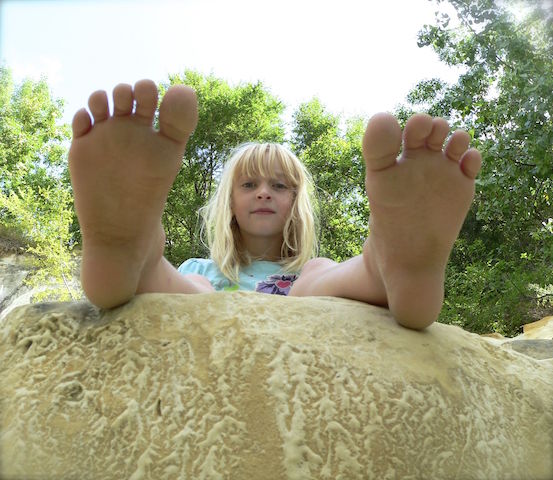 |
| Boulevard gardens |
We know that one of the key factors for adults who love and protect the natural world is having had positive experiences in nature as children. So getting children outside when they are very young and giving them access and freedom to explore and enjoy nature - plants, insects and other animals, dirt, rocks, and elements of weather - is crucial.
 |
| Front yard bird feeder |
Now what about those city kids? Nature is everywhere, even in the city. One way I make nature available to children in my city, to people of every age really, is through my gardens. I have planted nearly every square inch of our tiny city lot. Front yard, back yard, boulevards, and alley. There are gardens in the ground, in planters, pots, bags, tires, boxes, plants climbing walls and porches, and plants in raised beds. I grow edibles, native perennials, annuals, trees and shrubs. My daughter has her own raised bed in our front yard. Just this year we took out our last remaining bit of turf grass and replaced it with native grasses and wildflowers. We provide habitat for butterflies, birds, bees, squirrels, rabbits, voles and mice, the occasional toad, dragonflies, raptors, worms, slugs, and countless other invertebrates and mammals. And because my daughter is outside all the time, and has been nearly her whole life, she knows every hiding place for every animal. She knows, from observing, what they eat, what type of habitat they require, and how (if appropriate) to safely handle them.
 |
| Boulevard garden |
I've talked to many people who walk past my house and smile when they look at the gardens. I can see the delight when someone watches a butterfly on a milkweed plant or sees a goldfinch eating seeds from the flower of a cup plant. Gardens make people happy. I suspect some of that happiness comes from the sensory nature in gardens - the colors, scents, textures, the beauty in nature. Gardens remind us of the wonder, joy, and diversity in the natural world. But I think gardens also remind us that there are powers greater than ourselves, that while we can plant things and meticulously try to maintain them a certain way, there is a wildness out there that we can't tame. In my opinion, that's a good thing.
 |
| Planters filled with kale, amaranth and dill |
So yes, I do know about "nature deprivation syndrome." And I am doing my best to combat it in my little corner of the world. One garden at a time.
 |
| Raised bed on boulevard, planted with beans and squash |
 |
| Anything can become a planter! These hold sunflowers, okra, and cosmos. In the alley garden. |
















